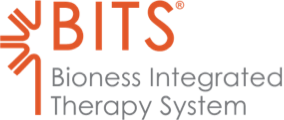
Improved Mobility. Made Easier.
The L300 Go system uses functional electrical stimulation (FES) to help correct foot drop and thigh weakness. The system stimulates the nerves and muscles that lift the foot to walk more naturally.

Freedom and function are within reach
The H200 Wireless Hand Rehabilitation System uses functional electrical stimulation (FES) to improve hand function so users can get back to activities of daily living.

Developed by therapists, for therapists
The Vector Gait and Safety System is a ceiling-mounted robotic system that supports a patient’s body weight during rehabilitation activities. Vector gives patients confidence while allowing clinicians to focus on performance and outcomes.

Rehab’s #1 Multidisciplinary Therapy Solution Just Got EVEN Better.
The Bioness Integrated Therapy System (BITS) is a software-based therapy platform that uses an interactive touchscreen display to challenge, assess, and track a patient’s deficiencies in vision, cognition, and balance.
We Help People Regain Function and Freedom
Bioness, a Bioventus Rehab Company, develops medical technologies to support recovery for people living with the effects of stroke, brain injury, and other conditions, as well as the clinicians who provide care for them.

Bioness University
Access short videos that can help patients and clinicians get the most from the Bioness L300 Go and H200 Wireless devices.
Topics include putting on the devices, pairing devices with each other or with the myBioness™ mobile app, resetting sensors, and registering device components.




